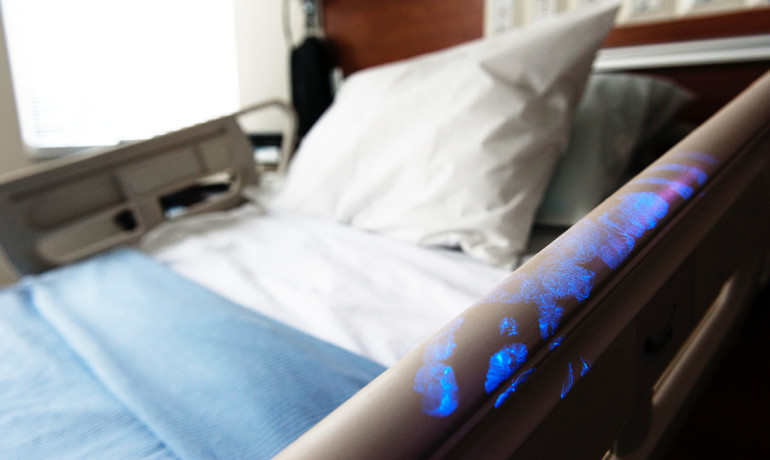
A robot that uses ultraviolet light can kill up to 70 percent of bacteria in hospital rooms in just 12 minutes. The device—which bears a striking resemblance to the fictional robot in Star Wars known as R2-D2—has a large saucer-shaped head on top of a column that rises up to reveal a bulb filled with xenon gas.
When the system is switched on, high-voltage electricity passes through the bulb and releases a spectrum of UV light that binds to the DNA of organisms and kills them.
“A typical 100-bed hospital sees about 10 to 20 hospital-acquired infections a year,” says Chetan Jinadatha, assistant professor at the Health Science Center College of Medicine at Texas A&M University. “Our goal is to get to zero infections.”
An earlier study that compared the effectiveness of manual disinfection alone to manual disinfection plus the use of UV light showed that manual cleaning plus UV light killed more than 90 percent of the bacteria, compared to 70 percent with manual cleaning alone.

Surfaces in hospital rooms such as tray tables, bedrails, call buttons, and grab bars can be reservoirs for bacteria, some of which can be fatal. (Credit: Texas A&M Health Science Center)
STOPS SUPERBUGS
The new study, published in the American Journal of Infection Control, looked at the effectiveness of UV light disinfection by itself and found that in just 12 minutes the Xenon UV light system cut the amount bacteria in the room by about 70 percent—roughly the same level of effectiveness as manual disinfection.
Hospitals shouldn’t use the UV light system by itself, Jinadatha says, but it has value as a “safety net” to kill bacteria that traditional cleaning may miss. Currently, the system is being used in 40 Veterans Affairs hospitals across the country and about 200 private hospitals.
“There is no one thing that will take away the problem of hospital-acquired infections, but we are slowly chipping away at it.”
Keeping hospital rooms clean is key to stopping the spread of infections from one patient to another. Surfaces in hospital rooms such as tray tables, bedrails, call buttons, and grab bars can be reservoirs for bacteria such as methicillin-resistant Staphylococcus aureus (MRSA), which can be difficult to treat, and in some cases, fatal.
Of particular note was the fact that manual disinfection plus UV light killed 99 percent of the bacteria that cause MRSA.
In addition to the human toll, hospitals now have a financial reason to reduce hospital-acquired infections: beginning in 2017, the federal government will dramatically reduce Medicare payments to hospitals that exceed incidences of them and of other conditions.
Source: Texas A&M University
Posted by Holly Lambert-Texas A&M on April 14, 2015
